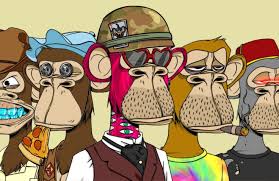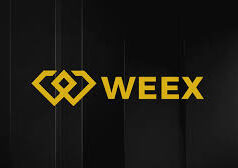Non-Fungible Tokens (NFTs) have taken the world by storm, transforming from niche digital collectibles to a full-blown cultural and economic phenomenon. If you’ve ever scratched your head wondering what these things are or why people are dropping millions on pixelated art, you’re not alone. Let’s take a stroll through the history of NFTs, explore how they’ve evolved into a commodity, and unpack what makes them so fascinating—and polarizing. Buckle up; it’s been a wild ride.
The Dawn of NFTs: A New Kind of Digital Ownership
NFTs didn’t just pop up overnight. Their roots trace back to 2014 with the creation of Colored Coins on the Bitcoin blockchain, which allowed users to assign unique attributes to specific bitcoins. Think of it like sticking a Post-it note on a dollar bill to make it “special.” This idea of unique digital assets laid the groundwork for NFTs as we know them. Fast forward to 2017, and Ethereum’s blockchain, with its smart contract capabilities, became the perfect playground for NFTs. The first true NFT project, CryptoPunks, launched that year by Larva Labs—a collection of 10,000 algorithmically generated pixelated characters, each unique and tradable.
By 2021, NFTs were no longer a geeky side project. They exploded into the mainstream, with artists, musicians, and even sports leagues jumping on board. Beeple’s EVERYDAYS: The First 5000 Days sold for a jaw-dropping $69.3 million at Christie’s, and suddenly, everyone was talking about NFTs. It felt like the internet had birthed a new gold rush, and people were ready to stake their claim.
Why NFTs caught fire
What made NFTs click? It’s simple: they offered a way to prove ownership of digital stuff in a world where copying and pasting is second nature. Using blockchain technology, NFTs are unique, tamper-proof tokens that can represent anything—a piece of art, a tweet, a virtual sneaker. This scarcity and authenticity resonated in a digital age craving exclusivity. Plus, the hype didn’t hurt. Celebrities like Snoop Dogg and Paris Hilton flaunting their NFT collections on X turned it into a cultural flex.
From Hype to Commodity: The Market Takes Shape
NFTs as tradable assets
By 2022, NFTs had morphed from quirky collectibles into something akin to a commodity. A commodity, by definition, is a standardized, interchangeable good traded in bulk—like oil, gold, or wheat. NFTs aren’t quite barrels of crude, but their market dynamics started mimicking commodities. Platforms like OpenSea and Rarible became bustling marketplaces, with trading volumes hitting $25 billion in 2021, according to DappRadar. People weren’t just buying NFTs to admire them; they were flipping them for profit, treating them like stocks or baseball cards.
Take Bored Ape Yacht Club (BAYC), a collection of 10,000 cartoon apes. In 2021, the floor price (the cheapest available ape) skyrocketed from $200 to over $300,000 at its peak. Investors saw NFTs as a speculative asset class, with some projects offering utility like exclusive club memberships or in-game perks. This commoditization was fueled by liquidity—NFTs could be bought, sold, or traded instantly on global platforms.
The role of utility and community
What cemented NFTs’ commodity status was their growing utility. Unlike traditional commodities, NFTs often come with perks. Owning a BAYC NFT might get you into virtual concerts or grant you commercial rights to your ape’s image. Projects like World of Women and Azuki built communities around their NFTs, creating a sense of belonging that added value. It’s like buying a share in a company that also throws exclusive parties. This blend of financial speculation and cultural cachet made NFTs a unique hybrid—part commodity, part status symbol.
The Boom, the Bust, and the Rebound
The 2022 crash
Nothing goes up forever, and NFTs learned that the hard way. In 2022, the crypto market tanked, and NFT trading volumes plummeted 97% from their January peak, per Dune Analytics. The floor price of BAYC NFTs dropped to around $50,000 by mid-2023. Critics crowed that NFTs were a fad, a bubble popped by rising interest rates and a broader “crypto winter.” Scams didn’t help—rug pulls, where developers vanished with investors’ money, became all too common.
I remember scrolling through X in 2022, seeing posts like, “NFTs are dead, lol.” But the obituary was premature. While the hype cooled, the infrastructure—blockchains, marketplaces, and communities—kept chugging along. Developers doubled down on utility, integrating NFTs into gaming, metaverses, and even real-world assets like property deeds.
The comeback kid
By 2025, NFTs were staging a comeback. OpenSea reported a 50% increase in trading volume in Q2 2025 compared to Q2 2024, hitting $3.2 billion. Ethereum remained the dominant blockchain, but newer chains like Solana and Polygon gained traction for their lower fees. NFTs tied to real-world assets—like tokenized real estate or luxury goods—started gaining steam. For example, RealT tokenized properties, allowing users to buy fractional ownership as NFTs, blending commodities with real estate.
This resurgence showed NFTs weren’t just digital trinkets; they were becoming a standardized asset class. Institutional players like BlackRock and Fidelity began exploring NFT-backed funds, signaling that Wall Street was starting to see them as a legitimate commodity, not unlike gold ETFs a decade earlier.
What Makes NFTs a Commodity in 2025?
Standardization and liquidity
So, why are NFTs considered a commodity now? First, standardization. While each NFT is unique, collections like CryptoPunks or BAYC are part of a broader, interchangeable market. You can trade one Punk for another, much like swapping barrels of oil of the same grade. Second, liquidity. With platforms like Blur and LooksRare, you can sell an NFT in seconds, unlike illiquid assets like fine art. Daily trading volumes in 2025 regularly hit $100 million, per NonFungible.com.
Speculation meets utility
Speculation still drives much of the market—people buy low, hoping to sell high. But utility is the secret sauce. NFTs now power in-game economies (think Axie Infinity), virtual land in metaverses like Decentraland, and even ticketing for events. This versatility makes them a commodity with staying power, as they’re embedded in both digital and real-world ecosystems.
Risks and challenges
It’s not all rosy. Volatility remains a hurdle—NFT prices can swing wildly, as seen in the 2022 crash. Scams and regulatory uncertainty also loom large. The SEC’s scrutiny of whether some NFTs are securities could reshape the market. Yet, the same could be said of early stock markets or cryptocurrencies, both of which matured into commodities despite growing pains.
The Road Ahead: Where Are NFTs Headed?
Evolving use cases
Looking forward, NFTs are poised to expand beyond art and collectibles. They’re already being used for identity verification, supply chain tracking, and even tokenized carbon credits. Imagine buying an NFT that represents a share of a sustainable forest—commodity vibes with a green twist. Gaming is another frontier, with NFTs enabling true ownership of in-game assets, a market projected to hit $250 billion by 2030, per Statista.
A cultural and economic staple
NFTs have come a long way from their 2017 roots. They’ve weathered hype, crashes, and skepticism to emerge as a commodity with unique flair. They’re not just digital art; they’re a new way to own, trade, and interact with value in the digital age. As blockchain tech improves and adoption grows, NFTs could become as commonplace as stocks or real estate in investment portfolios.
Closing Thoughts: The NFT Legacy
The history of NFTs is a rollercoaster of innovation, greed, and resilience. From CryptoPunks to million-dollar apes, they’ve redefined what it means to own something digital. As a commodity, they blend speculation with utility, offering a glimpse into a future where digital and physical assets blur. Love them or hate them, NFTs are here to stay, and their story is still being written. What’s your take—ready to mint your own or still on the sidelines?
Sources:
- DappRadar, “NFT Market Report 2021,” January 2022
- Dune Analytics, NFT Trading Volume Dashboard, 2022-2025
- NonFungible.com, “NFT Market Overview,” August 2025
- Statista, “Blockchain Gaming Market Forecast,” 2025
- OpenSea Market Reports, Q2 2025
- Larva Labs, CryptoPunks Documentation, 2017
- Christie’s, “Beeple’s EVERYDAYS Sale,” March 2021
- X posts on NFT market trends, 2022-2025




























With high APRs (16-20%), isn’t it too risky for retail collectors?
With $40B in Q1 2025 NFT volume, do you think we’ll see more brands like Nike with hybrid NFTs?
think the $24.4B gaming NFT market will outpace art NFTs by 2026?
The play-to-earn gaming angle with projects like The Sandbox is kinda cool
with 95% of collections at zero value, how do we spot the winners?
The shift of NFTs to utility-driven assets is so exciting!
I’m stoked about virtual land and fractional real estate.
The article nails how gaming and real estate are changing the game
Animoca’s Cool Cats move is a big deal for gaming NFTs.
Love how the article traces NFTs from Bored Apes to real-world use cases!
The transition from JPEGs to utility NFTs is mind-blowing